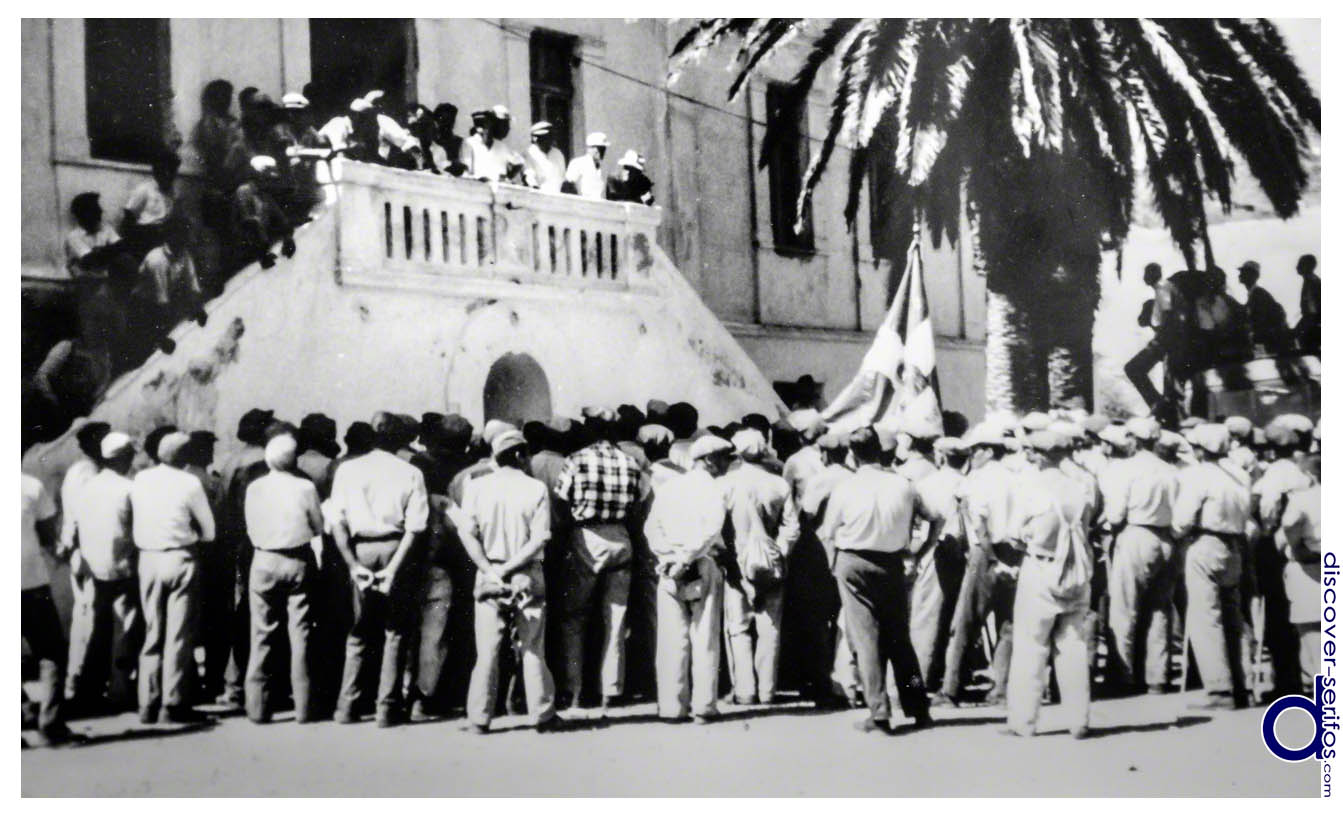
The Grohmann family
At the time when the Grohmann Family was in charge of the mines, Serifos population was multiplied. In 1912 it reached 4.000 residents, along with the workers that came from other islands and the Peloponnese, looking for a job.
Emile Grohmann, having the police and a small part of the local community on his side, performed his duties targeting always at maximizing his benefit and profit. He forced the landowners to assign him any land he was interested in -often enough pushing them too hard- in exchange of a miniscule payday. On the other hand, he created infrastructures, such as the hospital, the school (“The Grohmann School”) and the Baths in Mega Livadi, while his wood-carved tributes in some of Serifos’s churches, as well as the transport and storage of relics from the Cyclops Cave, show that he was partially interested in the welfare of the island, too.
After the death of Emile, in 1906, manager of the mines became his son Georg Grohmann. In spite of his education in Clausthal Mining Institute and his young age, he proved to be more brutal than his father, defying the residents’ needs and expectations for a better life.
The living and working conditions were tragic, while whoever did not stay in the southwest part of the island, where the mines were, had to walk a long and rocky distance in order to get there – part of thisroutestill exists in the hiking trail that joins Ano Chora with “Giftika” area. Moreover, security measures were nonexistent inside the mining galleries, leading to about 60 deaths of workers within just 2 years.
It is said that the employees of the school and the hospital were paid by the workers themselves, not by the mining company. Furthermore, the miners gave back 2% of their wage to Grohmann, for unknown reasons, while 1 drachma per month was withheld, for the erection of some church that was never built.
Grohmann had loyal staff at his service, as janitors and “crook-holders”, who took care -often violently- so that everyone followed his commands. The working hours were inhuman, starting early before dawn and lasting till late at night, and if anyone was late, he was not allowed to work, thus losing his payday.
As more and more foreigners arrived to the island, people got to know about the circumstances that took place in mines of other areas, and mostly about the existing laws concerning both the working conditions and working hours. In fact, since 1901 there was a law “On Miners’ Fund”, the “Regulation of Mining Operations” existed since 1910 and the casualties care decree for miners since 1912.
The decade of 1910 is characterized by the first severe mining crisis, due to the international competition with countries that had plenty of οre, richer in concentration and cheaper. Many mines shut down in other islands, while “Serifos – Speliazeza” production steadily declined, from 172.000 tons in 1910 to 110.000 in 1914 and just 27.700 tons in 1915. The First World War broke out, along with all of its aftermath, while at the same time several ideological and political fermentations in the labor party resulted in strikes in many Greek mines that were still in operation.

 facebook
facebook pinterest
pinterest instagram
instagram twitter
twitter